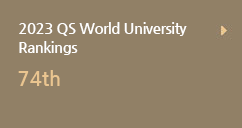Two for One: Upcycling Plastic Waste into Useful Material that Leverages Solar Energy

▲From left to right: Feng Gong (Associate Professor), Xiangzhou Yuan (Research Professor),
Rui Xiao (Full Professor, ), and Yong Sik Ok (Full Processor)
Scientists develop a facile and cost-effective strategy to repurpose polymeric foam in various sunlight-powered applications.
Humanity needs innovative ways to combat the ever-increasing plastic pollution and energy consumption problems. In a recent study, an international team of scientists showcased a novel method to upcycle plastic foam waste into a highly versatile, cost-effective, and durable material for solar energy harvesting. Their approach has applications in water purification, ethanol distillation, and oil spillage cleanup, thereby constituting a great addition to the waste-to-energy nexus.
To avoid jumping straight into a global environmental crisis, we need to change our ways and fully embrace the concepts of sustainability and a circular economy. Appropriate waste management, recycling, and upcycling are among the main pillars of such still-idealistic societies, in which non-biodegradable plastic waste would be fully recovered and given a new purpose. Another foundational aspect of a sustainable society would be the use of clean and renewable energy sources for most of its endeavors, including the processing of plastic waste. But what if we could hit these two metaphorical birds with one stone?
Researchers are paying increasing attention to the waste-to-energy nexus, which encompasses technologies that simultaneously achieve waste reduction and energy production. Pyrolysis is one of the most common approaches to generate fuels from plastic waste, including discarded polymeric foams. Unfortunately, pyrolysis and other conventional ways of managing plastic waste consume energy and require highly technical skills. Thus, it’s high time we develop alternative strategies to breathe new life into plastic waste.
In a recent study published in Small (https://onlinelibrary.wiley.com/doi/full/10.1002/smll.202102459), an international team of scientists led by Prof. Yong Sik Ok from Korea University and Prof. Rui Xiao from Southeast University developed an innovative and remarkably simple method to turn polymeric foam waste into solar energy harvesters. Their approach involves taking advantage of the porous yet mechanically resilient structure of polymeric foam and use it, in combination with thermal energy procured from sunlight, for a variety of sustainability-related applications.
However, polymeric foams are not good at heating up by simply absorbing unfocused sunlight. The method proposed by the team involves first submerging and stirring the foam in a pyrrole-containing solution for a few hours. In this study, they used polymelamine formaldehyde, a plastic foam commonly used in packaging and as a cleaning abrasive. After washing and drying, the foam ends up coated in pyrrole, an organic compound with much better absorption characteristics in the solar spectrum. The resulting black, sponge-like material is extremely lightweight, inexpensive, and durable.
One application of this pyrrole-coated melamine foam (PMF) is water purification. The idea is to partially submerge the PMF in a water-containing recipient covered by a larger dome-like structure. Because of the capillary effect, water rises through the complex porous structure of PMF, which in turn heats up by absorbing sunlight. As the PMF transfers this heat to water, it quickly generates large amounts of steam, which condenses on the inner walls of the dome and eventually trickles down as clean water. “Our experiments showed that PMF could achieve solar evaporation rates superior to most photothermal conversion materials using solar energy alone, without using fossil fuels or electricity,” highlights Prof. Ok.
In a similar manner, PMF can be used for ethanol distillation. In this case, one begins the process with a diluted mixture of ethanol and water. Because ethanol evaporates many times faster than water, the liquid collected at the base of the dome after condensation and trickling will have a higher concentration of ethanol than the initial solution. By collecting the liquid accumulated in the dome and repeating this process several times, one can end up with a highly concentrated ethanol solution; the researchers reported that distillation from 10 vol% ethanol to 85 vol% ethanol was possible within just five cycles.
Yet another application of PMF demonstrated by the team was the cleaning of floating oil spillages. The porous structure and mechanical properties of the material make it act like an oil sponge, which can be reused over a hundred times with minimal losses in absorption capacity.
The positive qualities of PMF make it an attractive alternative to plastic foam waste upcycling in remote areas or emergency situations, as Prof. Ok remarks, “Owing to its advantages of ultra-facile fabrication, mechanical robustness, and cost-effectiveness, we anticipate that PMF may be widely applicable to portable energy-efficient systems for ecofriendly applications, thereby alleviating the serious environmental concerns arising from increasing energy consumption and pollution.”
Let us hope more and more people follow in the steps of this research team and come up with novel ways to reach sustainable development goals.
[Reference]
Authors
Feng Gong1, Hao Li1, Xiangzhou Yuan2, Jigang Huang3, Dawei Xia1, Dimitrios V. Papavassiliou4, Rui Xiao1, Yusuke Yamauchi5,6, Kevin C.-W. Wu7, and Yong Sik Ok2
Title of original paper
Recycling Polymeric Solid Wastes for Energy-Efficient Water Purification, Organic Distillation, and Oil Spill Cleanup
Journal
Small
[Affiliations]
1Key Laboratory of Energy Thermal Conversion and Control of Ministry of Education, School of Energy and Environment, Southeast University
2Korea Biochar Research Center, APRU Sustainable Waste Management Program and Division of Environmental Science and Ecological Engineering, Korea University
3School of Mechanical Engineering, Sichuan University
4School of Chemical, Biological, and Materials Engineering, University of Oklahoma
5School of Chemical Engineering and Australian Institute for Bioengineering and Nanotechnology (AIBN), The University of Queensland
6JST-ERATO Yamauchi Materials Space-Tectonics Project and International Center for Materials Nanoarchitectonics (WPI-MANA), National Institute for Materials Science (NIMS)
7Department of Chemical Engineering, National Taiwan University
![[Figure 1] The Novel Shift towards Cost-Efficient Recycling Strategies for Plastic Foam](/dext5editordata/2022/02/20220225_104726924_49376.png)
[Figure 1] The Novel Shift towards Cost-Efficient Recycling Strategies for Plastic Foam
Polymeric foams, such as melamine foam, are widely used as cleaning tools and for packaging and insulation materials. Finding ecofriendly ways to repurpose these plastics will put us a step closer to a truly sustainable society.
About Professor Yong Sik Ok
Prof. Ok is a full professor and global research director of Korea University, Seoul, Korea. He has published over 900 research papers and books, 96 of which have been ranked as Web of Science ESI top papers (92 have been selected as “Highly Cited Papers” (HCPs), and four as “Hot Papers”). He has been a Web of Science Highly Cited Researcher (HCR) since 2018 in Cross Field, Environment and Ecology, and Engineering. In 2019, he became the first Korean to be selected as an HCR in the field of Environment and Ecology. Again in 2021, he became the first Korean HCR in two fields: Environment and Ecology, and Engineering.
Prof. Ok is working at the vanguard of global efforts to develop sustainable waste management strategies and technologies to address the rising crisis in electronic and plastic waste and pollution of soil and air with particulate matter. He has also served in a number of positions worldwide, including as an Honorary Professor at the University of Queensland (Australia), Visiting Professor at Tsinghua University (China), Adjunct Professor at the University of Wuppertal (Germany), and Guest Professor at Ghent University (Belgium). He maintains a global professional network by serving as a Co-Editor-in-Chief of Critical Reviews in Environmental Science and Technology, Editor of Environmental Pollution, member of the editorial advisory board of Environmental Science & Technology, and editorial board member of Renewable and Sustainable Energy Reviews, Chemical Engineering Journal, and Environmental Science: Water Research & Technology, and several other top journals. He currently serves as the Director of the Sustainable Waste Management Program for the Association of Pacific Rim Universities (APRU) and Co-President of the International ESG Association. Moreover, he has served on the Scientific Organizing Committee of P4G Nature Forum: Climate Change and Biodiversity, and Nature Forum: Plastics and Sustainability. Prof. Ok has also served as the chairman of numerous major conferences such as the Engineering Sustainable Development series (ESD series), organized by the APRU and the American Institute of Chemical Engineers (AIChE). In 2021, Prof. Ok hosted the first Nature conference among South Korean universities in Seoul on waste management and valorization for a sustainable future together with Chief Editors of Nature Sustainability (Dr. Monica Contestabile), Nature Electronics (Dr. Owain Vaughan), and Nature Nanotechnology (Dr. Fabio Pulizzi). Prof. Ok will host the first Nature Forum on Environmental, Social & Governance (ESG) for Global Sustainability: the “E” Pillar for Sustainable Business.



